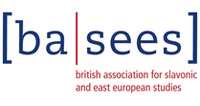Authors
Giovanni Cadioli1; 1 University of Padua, Italy Discussion
The present paper focuses on the attempts at reforming the Council for Mutual Economic Assistance (CMEA) at the time of Gorbachev’s reforms. During his tenure, the Soviet General Secretary and later President repeatedly attempted the revamp, later reform, and finally radically alter Soviet foreign economic relations with the countries grouped in CMEA, including both East European ones as well as selected significantly further away partners like Cuba and Vietnam. Proposals for change included simply reviving trade, strengthening scientific-technical cooperation, actually coordinating research and production, but also moving to a single socialist market in Eastern Europe. Proposed policies did not only concern trade, but also the strengthening of assistance to developing socialist countries: “provide comprehensive assistance in their efforts to strengthen the socialist field, increase the effectiveness of assistance provided”. What is more interesting however is the intention to establish and strengthen “direct industrial, scientific and technical ties with enterprises and organisations of other CMEA member countries” as well as “joint ventures and international associations and organisations” (LNA, f. 639, op. 21, ll. 117-118). This latter aspect is particularly relevant for it concerns the establishment and strengthening of direct ties between enterprises and associations in the Soviet Union-Republics with their counterparts within the east European socialist bloc right before the bloc and ultimately the USSR vanished. A few key resources exist on the matter, most notably Strany SĖV: Perestroika ekonomicheskogo sotrudnichestva (Moscow: Mezhdunarodnoe otnosheniia, 1989), M.C. Kaser (ed.), Reforms in Foreign Economic Relations of Eastern Europe and the Soviet Union (UN Press: New York, 1991) as well as annual CMEA data compiled by the Vienna Institute for Comparative Economic Studies. However these leave unanswered specific questions that only archival insight can hope to delucidate. Which regulations for such “direct industrial, scientific and technical ties” were put in place? How were they deployed by single enterprises and associations? How did these go beyond established practices? And most of all, how did these ties survive, if they did, the dissolution of the Warsaw Pact and later the fall of the USSR? Did they serve as a launchpad for post-socialist foreign economic relations between former Soviet Republics and former East European members of the Warsaw Pact? This paper aims at sketching a preliminary answer to such questions by focusing on two of the so-called “advanced Republics” of the late-Soviet period, Latvia and Estonia as well as Ukraine. 
